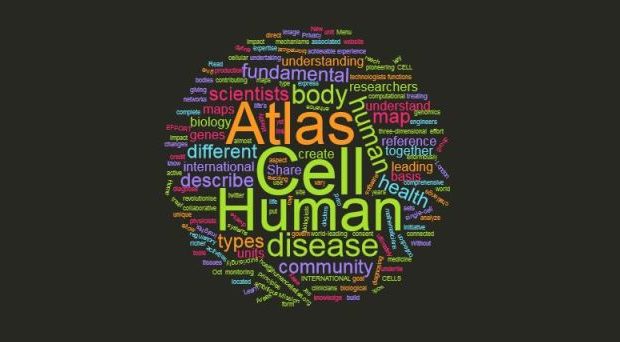
The Human Genome Project gave us unprecedented knowledge of our genetic code and has revolutionized the study of human genetics. A group of pioneering scientists now wants to take another huge step towards human self-knowledge by understanding all the cells that make up a human body, in a collaboration called the Human Cell Atlas. On October 13th and 14th 2016 I attended the inaugural meeting of the project.
The overall aim is to use genomic technologies, together with spatial imaging methods, to build a comprehensive three dimensional map of all the cell types in our bodies. This will be a huge challenge that will push boundaries in terms of both technology and collaboration. Existing methods will need to be vastly scaled up to produce all the genomic data that is needed. And there will need to be rigorous standardization of methods and working practices so that data produced in many labs around the world can be meaningfully combined.
Given all of this effort, and the expense that will go with it, why would we want to do this?
The concept of a human cell type may seem clear cut: we can easily envisage a neuron with its characteristic dendrites and axons, or an amoeba-like white blood cell. But it is becoming apparent that the picture is much more complex.
These studies have identified entirely new types of cells
A key advance in the last few years has been the ability to study the molecular content of single cells, most notably through single cell RNA sequencing. These studies have identified entirely new types of cells, and have blurred the boundaries between cell types, giving a picture of gradients of differences rather than sharp divisions.
The leaders of the Human Cell Atlas project believe that using single cell technologies to make a comprehensive map of cell types at high resolution is needed for a full understanding of human biology and a new wave of biomedical advances. For example, the Atlas would bring fundamental insights into how cells differentiate during development and in response to stimuli. This more comprehensive understanding of what healthy cells look like at the molecular level would also give a much clearer picture of the changes that occur in disease states. Such knowledge could lead to new diagnostics, drug targets and biomarkers.
The consensus was that the project should be truly international
The project is spearheaded by Aviv Regev (Broad Institute) and Sarah Teichmann (Wellcome Trust Sanger Institute, and European Bioinformatics Institute), who at the inaugural meeting had gathered an impressive array of leading thinkers from fields including cell biology, genomic technology and bioinformatics. The consensus was that the project should be truly international, not only in terms of the sources of the cells, but also in the scientific contributors to the project.
The main focus will be on sequencing messenger RNAs, as this is where the technology is most mature, but there was agreement that including other types of molecular information – for example, epigenetic and proteomic – will be crucial. What is less clear for now is whether these other sources of information will be captured from the start or overlaid on the mRNA information later on.
Specialists working on specific organs and tissues will have a major role in determining the precise strategy for different parts of the body, as they will know how to get at the key biological questions that are crucial for each field.
Many decisions need to be made about exactly how the project will proceed. For example, it’s not clear yet how many cells from how many people will be needed to get a full picture. But the consensus at the meeting was to try it and see – a fuller picture of what’s needed will emerge once data from the pilots starts to be analysed.
A huge project needs huge amounts of funding, and there is certainly interest already. The inaugural meeting was held at the London headquarters of the Wellcome Trust, the largest medical research charity in the world. And The Chan Zuckerberg Initiative has expressed its support – the new President of the science arm of the initiative, Cori Bargmann, spoke at the meeting.
However, my personal feeling is that more emphasis needs to be made at this stage on fleshing out the specific ways in which the Atlas could lead to advances in disease prevention, diagnosis and treatment. There is a danger of suggestions that the project is being driven by technologists who are keen to apply the new avenues open to them without a clear picture of the ultimate benefits.
No firm timeline is in place yet for completion of the project – it could be 5 years, 10 years or more. And it’s not clear yet exactly what completion would look like. But there is an excellent chance that the outcome will be a radically different understanding of the basic units that make up our bodies.
- Ahead of the curve: embracing preprints - 14th December 2016
- The Human Cell Atlas: an audacious step towards self-knowledge - 18th October 2016
- Ask a geneticist: a Q+A with Louisa Flintoft - 22nd April 2016
One Comment